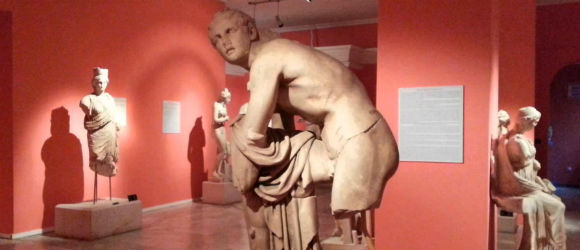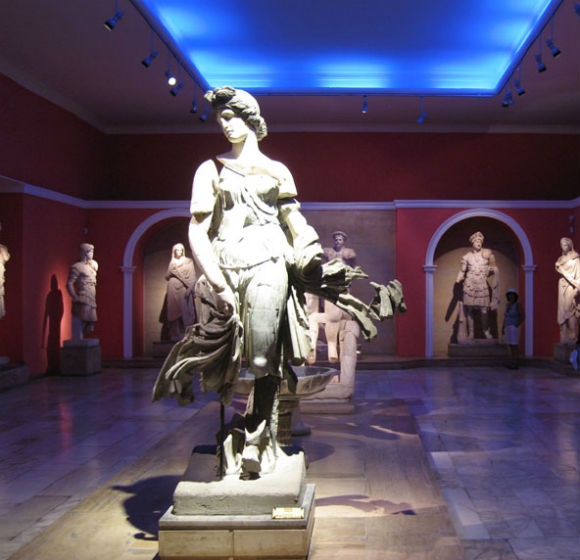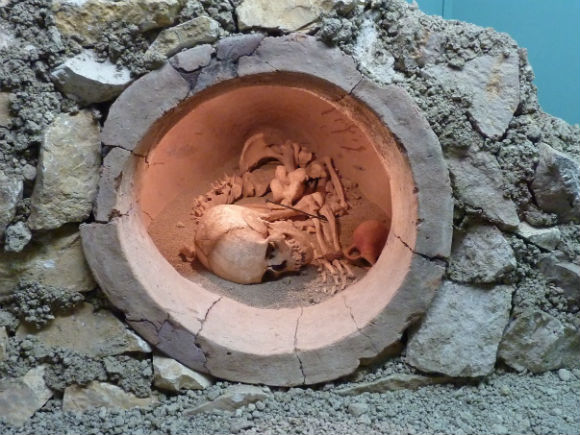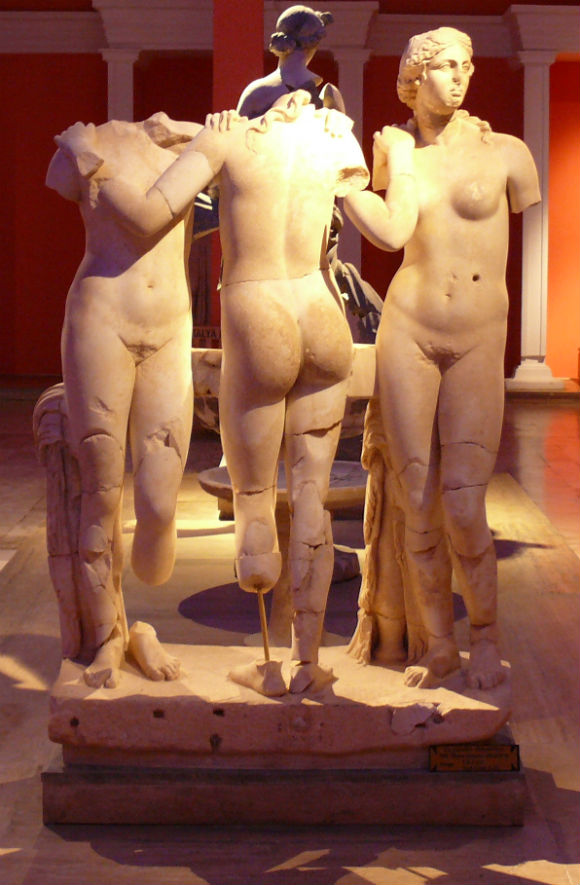The Antalya Archaeological Museum is one of Turkey’s largest museums, located in Antalya. It includes 13 exhibition halls and an open air gallery. It covers an area of 7,000 m2 (75,000 sq ft) and has 5000 works of art are exhibited. In addition a further 25,000–30,000 artifacts which cannot be displayed are in storage. As a museum exhibiting examples of works, which illuminate the history of the Mediterranean and Pamphylia regions in Anatolia, Antalya Museum is one of the most important of Turkey’s museums. The Museum won the “European Council Special Prize” in 1988.
At the end of the World War I, during the time when Antalya was under the Italian military occupation, Italian archeologists started to remove the archeological treasures that had been found in the center or the surroundings to the Italian Embassy, which they claimed to do in the name of civilization. To prevent these initiatives, Süleyman Fikri Bey, the Sultan’s teacher, applied to the Antalya post and jurisdiction of the provincial Governor in 1919 and had himself appointed as voluntary curator of antiquities and first tried to establish the Antalya Museum by collecting what remained in the center.
The museum at first operated in the Alâeddin Mosque in 1922, then in Yivli Minare Mosque beginning from 1937, and then moved to its present building in 1972. It was closed to visitors for a wide range of modifications and restorations in 1982. It was reorganized according to a modern approach for a museum and opened to the public in April 1985, after the restorations and display arrangements made by the General Directorate of Ancient Objects and Museums.
Antalya Museum,






Its is one those surprising moment..an archaeological museum that actually does leave you jaw dropped and stunned. Whatever you do in Antalya you must go here…
Located at the end of the tramway you enter the early halls that provide the context and some interesting artefacts. The you walk through the monumental sculptures..huge standing statues of Herakles, Artemis and the…
As the biggest city of the Turkey's richest archaeolegical region, Antalya Museum promises you very rich content from different civilizations.
You can see the strokes of Roman, Persian, Lycian, Helenistic artists.
Perge region stigmatize the museum with charming sculptures brought from there. Also recently, missing part of Herakles Eikon has been brought from USA and now you can have a…
Having visited Perge, Aspendos and Side (and also the Istanbul Archaelogical Museum, Topkapi), this is a must see if you are in the Antalya area. The main attraction are the statues recovered mainly from Perge but also the Pamphlyian tombs which have remarkable carvings. Entrance was 15TL and well worth it. There is free parking inside the grounds outside the…
Especially strong on sculpture from the ancient sites around Antalya – some of it artistically impressive, like the sculptures from Perge, and some just giving a poignant glimpse of life as it was lived, like the sarcophagus that once held a much-loved pet dog. The exhibits are well displayed and well labelled. The museum shop is well laid out and…
This museum had an impressive collection of Lycian Roman and Greek artifacts from the area. It was well laid out and had many signs in English. You could very close to the sculptures. When I went to this museum I was not expecting much, but was pleasantly surprised. This is a first class museum. A definite must see in Antalya.
This is a really nice museum. The displays are nicely arranged and there is good signage – in Turkish and English – to explain just what you are seeing. I recommend visiting the museum before going to any of the ruins in the area.
A history buffs dream, gorgeous full size statues – so close you could touch (but don't !! fingerprint oil will ruin them !!) so beautiful – you can look a goddess right in the eyes an inch from her face – magnificent workmanship and so lifelike !! there are many fine treasures in this museum which is very close to…
What amazed me was that a lot of the finds are recent. One statue of Heckeles recently united (top & bottom from USA) as recently as September 2011
You can enter the old quarters from various streets but this is the finest entrance and very impressive. The gate was built in 130 AD in honour of the Roman Emperor Hadrian.
It is made of white marble, except for the columns, and decorated with reliefs and engravings. The entrance was left unused for many years, which is why it…
The museum has an excellent collection of artifacts from Perge including statues, sarcophagi, and an interesting display of Turkish tea, coffee, and textiles.